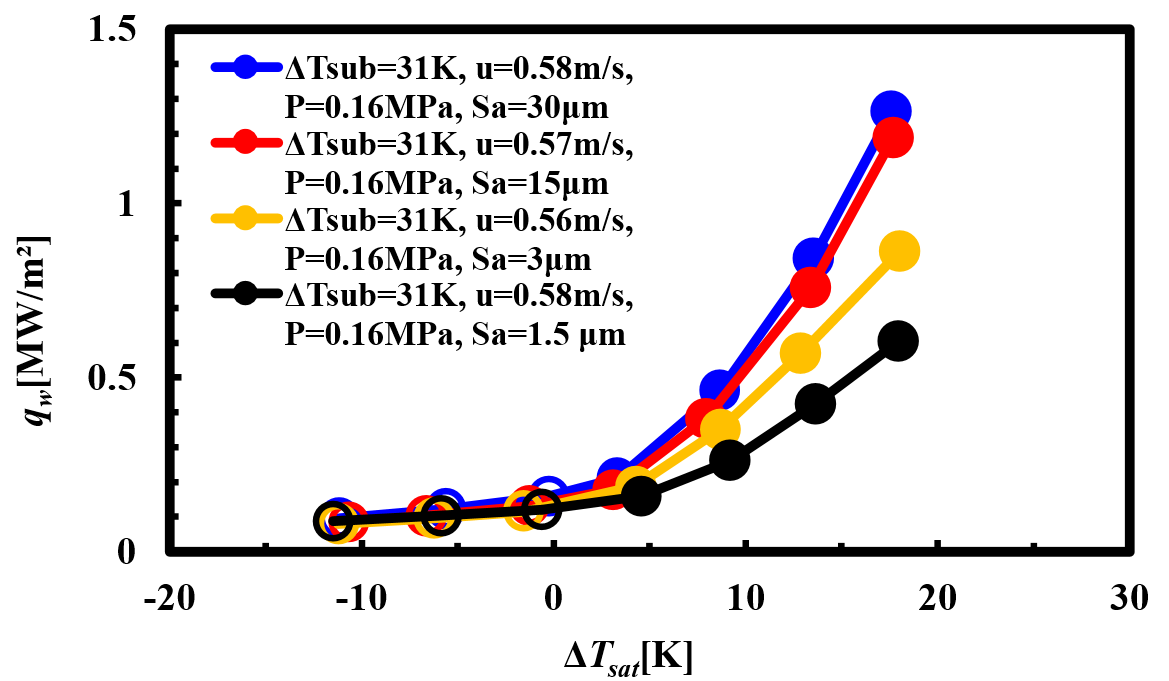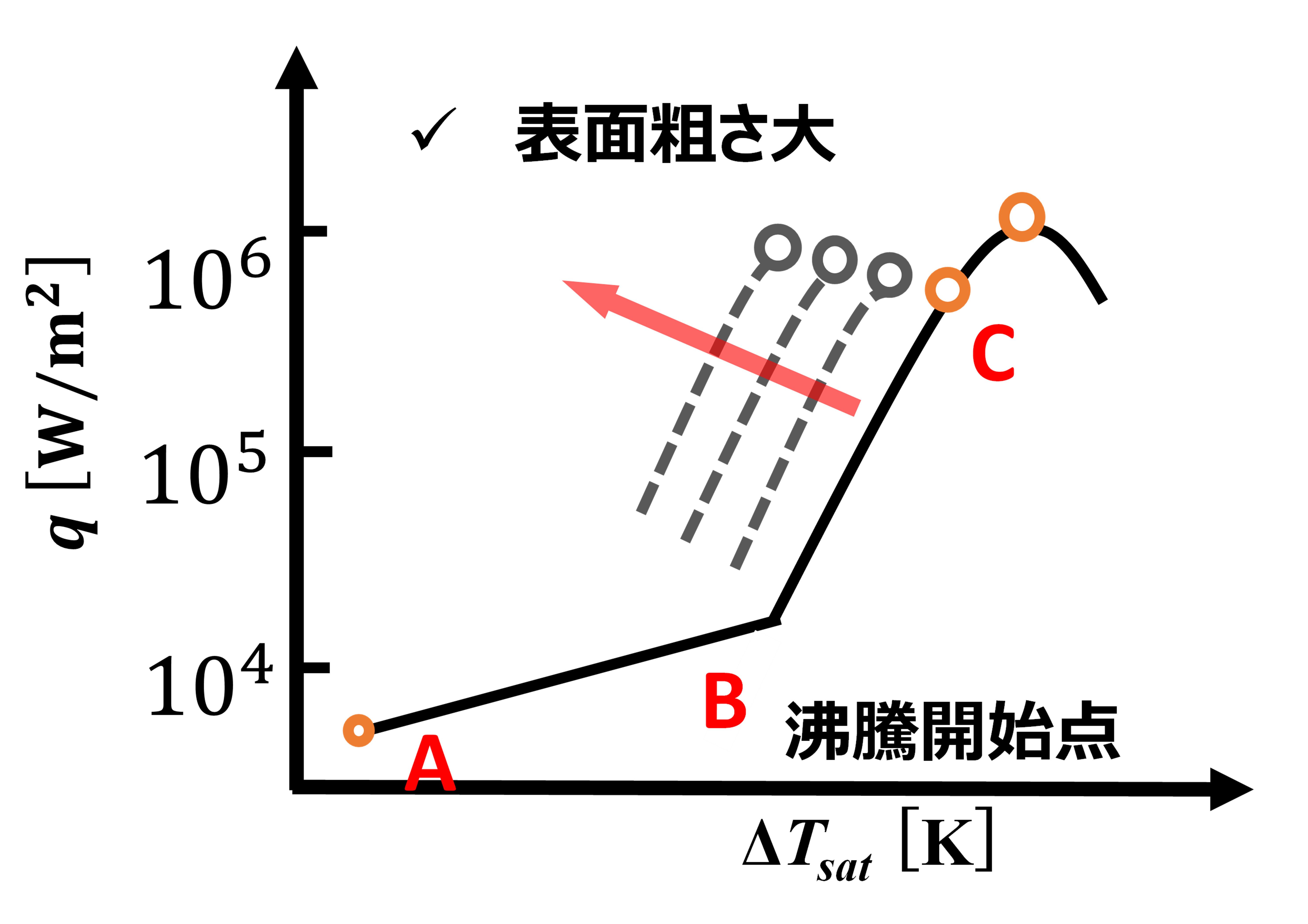核沸騰現象による冷却チャネル内の熱伝達メカニズムの強化に関する研究
理工学部機能創造理工学科 イルマズ エミール 助教
- 研究
【研究の概要】
Thermal management is a vital concept that’s gaining more attention with the progress in engines, batteries, and even data centers. Similar to humans, these machines work best within a certain temperature range. In order to maintain these optimum temperature ranges, a phenomenon called Nucleate Boiling (NB) comes into the spotlight. NB is a heat transfer phenomenon where bubbles form on a surface when it is hotter than the surrounding fluid, enhancing heat dissipation. By this phenomenon, heat is transferred from a hotter surface more efficiently (up to a limit known as the Critical Heat Flux point), all thanks to these bubbles. Our studies showed that surface characteristics (such as surface roughness, wettability, hydrophobicity/hydrophilicity) have the highest impact on bubble generation, thus the overall heat transfer efficiency. In our current approach, we are aiming to clarify the physics behind the bubble generation and its relation to the heating surface characteristics, under pool boiling conditions. Our aim is to create guidelines for the development and manufacturing of functional surfaces via EDM & LST technique, where these surfaces can enhance the heat transfer efficiency. Consequently, increasing the efficiency of conventional cooling systems and contribute to the energy efficiency goal related to the SDG 7.3.



【将来の発展性】
The know-how from the pool boiling experimental setup will be implemented into flow boiling conditions in order to create high efficiency cooling systems with enhanced surficial cooling properties.
